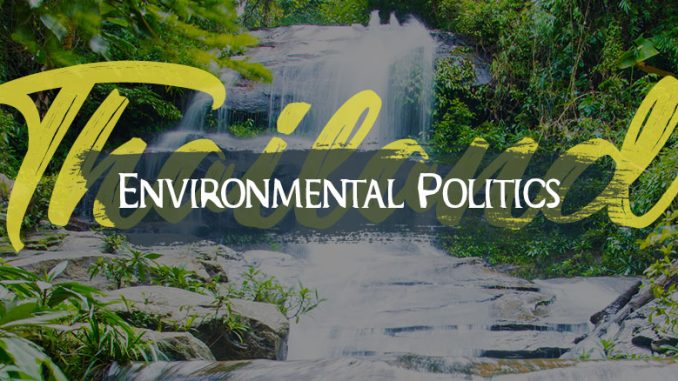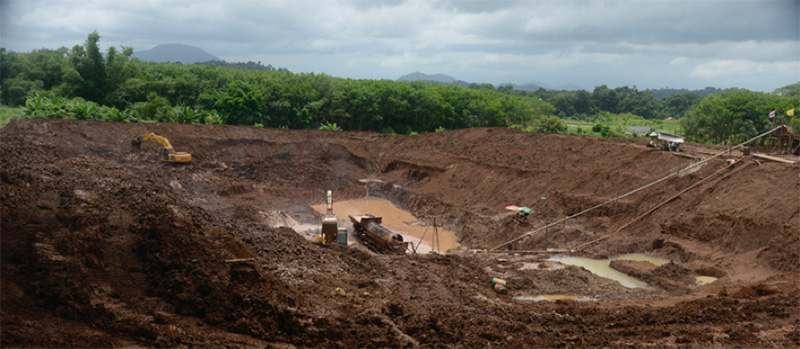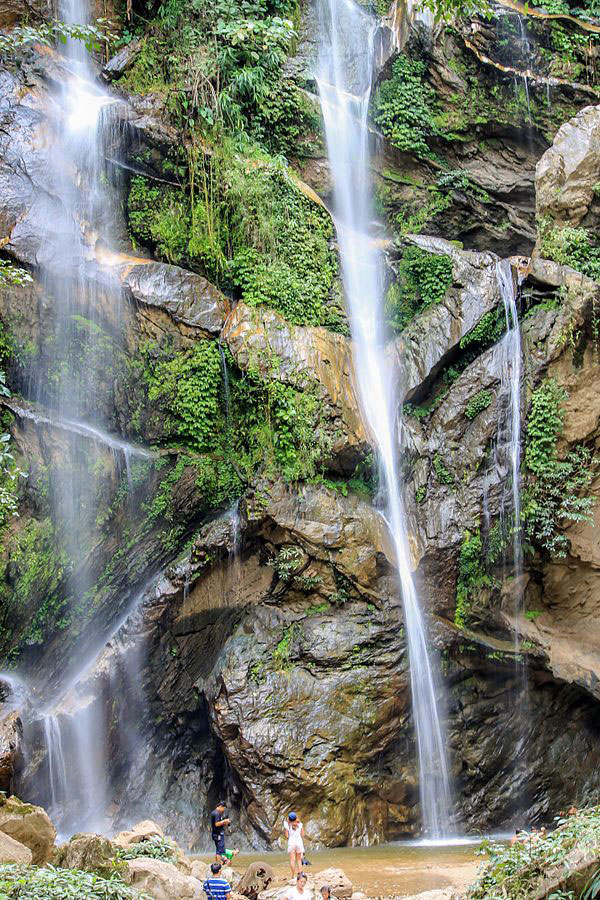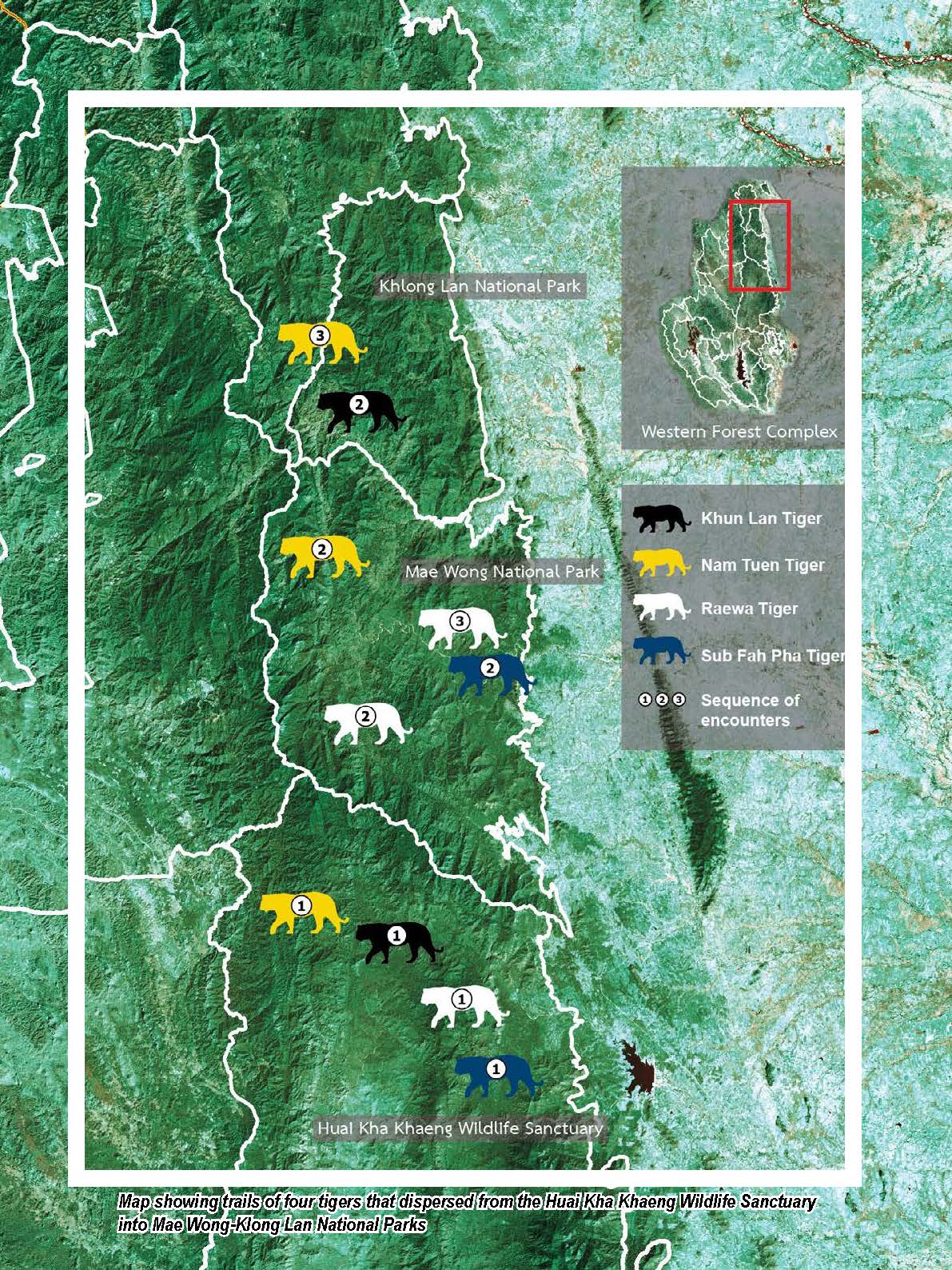
On February 4th, 2018, Premchai Karnasuta, the CEO of the Ital-Thai construction firm, was found in the Thungyai Naresuan Wildlife Sanctuary surrounded by firearms and the carcasses of deer, game birds, and one, rare, Indochinese black leopard. The cat was perhaps one of the last of its kind.
The public swiftly condemned the poaching. Students at Chulalongkorn University gathered, clad in panther masks, to demand justice for the animal. Images of panthers appeared across social media: panthers on walls, on street signs, and even on the construction barricades blocking off Ital-Thai’s ubiquitous project sites. The images mobilized outrage against both the wanton cruelty of the poaching and the abusive privilege that gave rise to it.
As others have noted, the incident brought with it the echoes of 1973 when a helicopter crash revealed that military officers had been hunting illegally in the same sanctuary. Six months after that incident, the military government was ousted from power on the back of the student movements that ushered in that critical moment of democratic governance. Along the winding and often cyclical pathways of Thai history, this recent incident brings with it renewed hopes that environmental politics might be yet again be an early harbinger of larger forms of political change still to come.
These hopes were intensified when a second environmental controversy erupted on the edges of Doi Suthep National Park in Chiang Mai where a luxury housing development for judiciary officials had been carved into the mountain’s forested slopes. Aerial images of the project spread across social media highlighting the project’s proximity to the park’s boundaries. Activists and citizens debated the effects of the project on the mountain and the structures of inequality that gave rise to its construction. In late April, protestors in Chiang Mai staged some of the largest public demonstrations since the military coup in 2014.
What role, if any, might these environmental movements play in the re-making and sustaining of Thai democracy? Or, more simply put, do environmental politics still matter in militarized Thailand? If so, how?
The answers to these questions are complex. On the one hand, the current struggles are evidence of both ongoing dissatisfaction with the military government and the ways in which environmental claims have enabled citizens to express their voices in a moment in which political action is deeply impinged. Yet, both of the current environmental controversies became the stuff of widespread political speculation because they were embraced by the urban middle classes who waged their struggles on behalf of the destruction of charismatic, vulnerable natures. These same political protagonists have been slower to express the same support to other ongoing environmental movements organized by lower-class activists around the negative environmental and health effects of extractive mining, the expansion of coal power, or the lingering effects of existing dams. Those issues also vividly demonstrate the interrelationship between political inequality, socio-economic exclusion, environmental degradation, and the capriciousness of power. Why do these sorts of issues fail to evoke the sympathies of the middle classes or to spark broader imagining of political transformation? Why do they seem unable to connect with one another? And why are they so tentatively linked to broader political movements?

Environmental politics formed a critical part of the broader story of democratic expansion in Thailand during the 1980s and 1990s (e.g. Hirsch 1993; Forsyth 2004). Yet, as Forsyth (2004; see also 2007) has described, those environmental movements were riven by schisms between the middle-classes focused on conservation and the lower classes, whose environmental politics often highlighted people’s embeddedness within environmental worlds that were both natural and man-made, pristine and disrupted. Pinkaew Luangaramsri (2016) emphasizes that the divisions within environmental movements are not simply class-based, but also reflective of a masculine framing of environmental politics that focus on the heroism of typically male-led struggles to save vulnerable nature at the expense of these other, more complex, entangled environmental struggles. Still others have shown distinctions of race and ethnicity have also been important to shaping the inequalities of conservation policy and broader forms of environmental knowledge (Anan 1998; Vandergeest 2003; Forsyth and Walker 2007). It is worth remembering here that conservation discourses have often facilitated the expansion of state power, land dispossession, and, in a sad irony, further resource extraction (Vandergeest and Peluso 1995; 2011).
These distinctions haven’t prevented environmental movements from contributing to the advance of democracy in Thailand, but they have produced different answers to the question of what gets conserved, who gets sacrificed, and whose struggles count as “proper” environmental politics in the first place. Even as environmental activism expanded alongside democracy, environmental movements have not always been politically progressive or even necessarily been pro-democracy. Rather, environmental politics reflect many of the same socio-economic inequalities and political exclusions fundamental to the broader Thai polity. Nevertheless, the return to environmental struggles now highlights both potential points of articulation between environmental and pro-democracy movements while also suggesting the limits of these alliances as they might mobilize for broader political changes.

One of the most critical potential intersections between pro-democracy and environmental movements relates to the ways in which cases like the poaching in Thungyai Narasuan or the illegal construction at Doi Suthep rest on pernicious forms of “everyday impunity” (Cheeseman, D’Costa, and Haberkorn 2015). While these forms of impunity are widely acknowledged to exist they inevitably remain partially or wholly occluded from view. Impunity, as Tyrell Haberkorn’s (2018) recent book reminds us, is not foreign to Thailand, but a kind of endemic form of state formation that is quite literally built into the nation’s socio-legal structure. The talk of “double standards” and “awakenings” in the wake of the Red Shirt protests highlighted this point as well. When environmental controversies like these arise, they seem primed to be mobilized to demonstrate the ways that powerful actors in Thailand can get away with murder. The images of the flayed black panther were potent because they offered a vivid piece of evidence of ways the layered inequities endemic to Thailand’s socio-political landscape were causing irrevocable harm to some of the country’s most vulnerable species. Similarly, the development at Doi Suthep was nothing new politically, but instead was another graphic piece of proof that the persistence of everyday impunity can move mountains, or at least eat them away, one quasi-illegal development at a time.
To the degree that the current regime’s legitimacy rests on its moral uprightness then these environmental controversies suggest significant cracks in its claims. Yet, these struggles do not necessarily indicate a wider opening up to more robust forms of democracy. Arguments about corruption and reform were also essential to the moral politics motivating each of the last two coups. Indeed, the controversy over the Mae Wong dam in 2013 mobilized the specter of the extinction of some of Thailand’s last wild tiger populations to resist both a project that movement’s participants disliked and a government they distrusted. As Philip Hirsh pointed out at the time, there were important similarities between the middle-class conservationists’ concerns about the dam’s effects on vulnerable Tiger habitats at the expense of poor and working class urban and rural people, and the kinds of anti-democratic attitudes that have been behind the coups and political disruptions that preceded that movement. In this sense, the dispute over the Mae Wong dam presaged the fall of the Yingluck government the following year. That the protestors at Doi Suthep insist that they are not a political movement but a movement working in the higher name of nature itself, seems, on the one hand, an effective piece of rhetoric, but on the other, a missed opportunity that reflects broader, persistent structural features of middle class environmentalism. It is these structural limits of middle class environmental politics may be precisely what prevents them from coalescing into a larger political movement.

Considering the ways Thailand’s structures of impunity not only shape the practice of government, but also etch themselves into the landscape at the expense of human and non-human natures is important. However, a more robust environmental politics would link the abuse of nature and the abuse of power more generally to broader and deeper expansion of both democratic forms of governance and the rule of law. By tying together exclusions and extinctions, dispossessions and degradation, coups and conservation, these political encounters might open a broader discussion about the ways that impunity is not only fundamental to the destruction of vulnerable natures, but also to other slower, grinding forms of environmental degradation that target the poor, deepen inequality, and poison democracy. Practices of environmental degradation shape and are shaped by the nation’s political and legal structures. For environmental politics to deepen democracy, environmentalists need to understand how claims to environmental justice and environmental well-being in poor communities are simultaneously claims to political voice, legal reform, and social equality.
In this way, one can’t help but wonder whether the recent attention called to the poaching of big cats highlights the wanton cruelty of the poachers or to the deeply embedded mechanisms behind poaching. If current middle-class-led environmental struggles are to work towards protecting nature and advancing democracy, they would be wise to link their claims to other less-magnetic struggles, both environmental and otherwise, including efforts to reform the legal system, to seek redress against corporate abuse, and to enhance the political voices of poor actors. This sort of environmentalism would broaden democracy by undermining the military’s claims to moral legitimacy and overtly linking the country’s physical, legal, and political landscapes. If these protestors fail to make these connections, it is likely their movements won’t produce larger political change. Instead, they will have lost sight of both the trees and the forest by focusing on the cats and not their hunters.
Eli Elinoff
Eli Elinoff is a lecturer in Cultural Anthropology at Victoria University of Wellington. Dr. Elinoff’s research focuses on political and environmental change in urban Thailand.
Works Cited
Anan Ganjanapan. (1998). “The Politics of Conservation and the Complexity of Local Control of Forests in the Northern Thai Highlands.” Mountain Research and Development. 18(1): 71-82.
Cheeseman, N., D’Costa, B., and Haberkorn, T., (2015) “Anticipating the Struggle against Everyday Impunity in Myanmar through Accounts from Bangladesh and Thailand.” Asia and the Pacific Policy Studies. 3(1): 48-61.
Forsyth, T. (2004) “Industrial pollution and social movements in Thailand.” In: Liberation Ecologies: environment, development, social movements (Peet, R. and Watts. M., eds). London: Routledge 422-438.
Forsyth, T. (2007) “Are Environmental Social Movements Socially Exclusive: An Historical Study from Thailand.” World Development. 35(12): 2110-2130.
Forsyth, T. and Walker, A. (2008) Forest Guardians, Forest Destroyers: The politics of environmental knowledge in Thailand.
Haberkorn, T. (2018) In Plain Sight: Impunity and Human Rights in Thailand. Madison: University of Wisconsin Press.
Pinkaew Luangaramsri. (2016). “Thailand: whither gender in the environmental movement?” In: Routledge Handbook of the Environment in Southeast Asia (Hirsch, P., ed.) London: Routledge. Pp. 470-482.
Vandergeest, P. (2003) “Racialization and Citizenship in Thai Forest Politics.” Society & Natural Resources. 16(1): 19-37.
Vandergeest, P. and Peluso, N. (1995) “Territorializaiton and State Power in Thailand.” Theory and Society. 24(3): 385-426.
Vandergeest, P. and Peluso, N. (2011) “Political Ecologies of War and Forests: Counterinsurgencies and the Making of National Natures.” Annals of the Association of American Geographers. 101(3): pp. 587-608.
